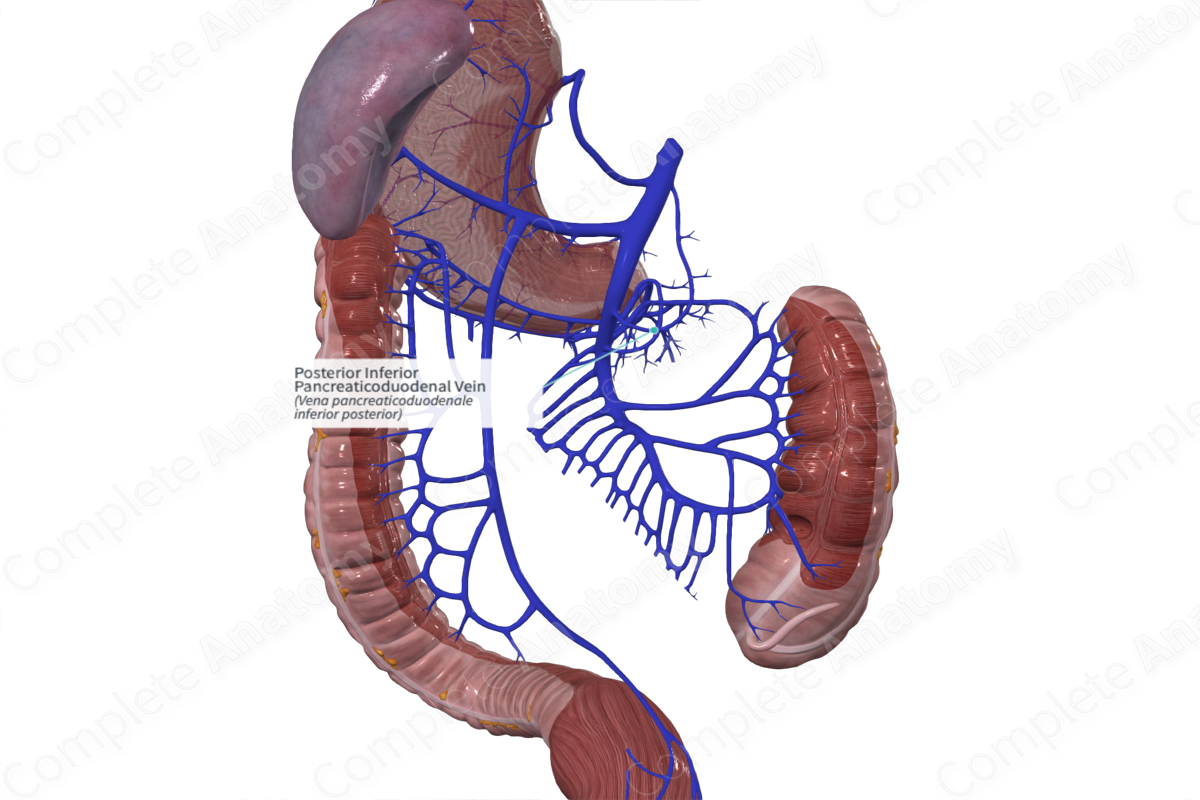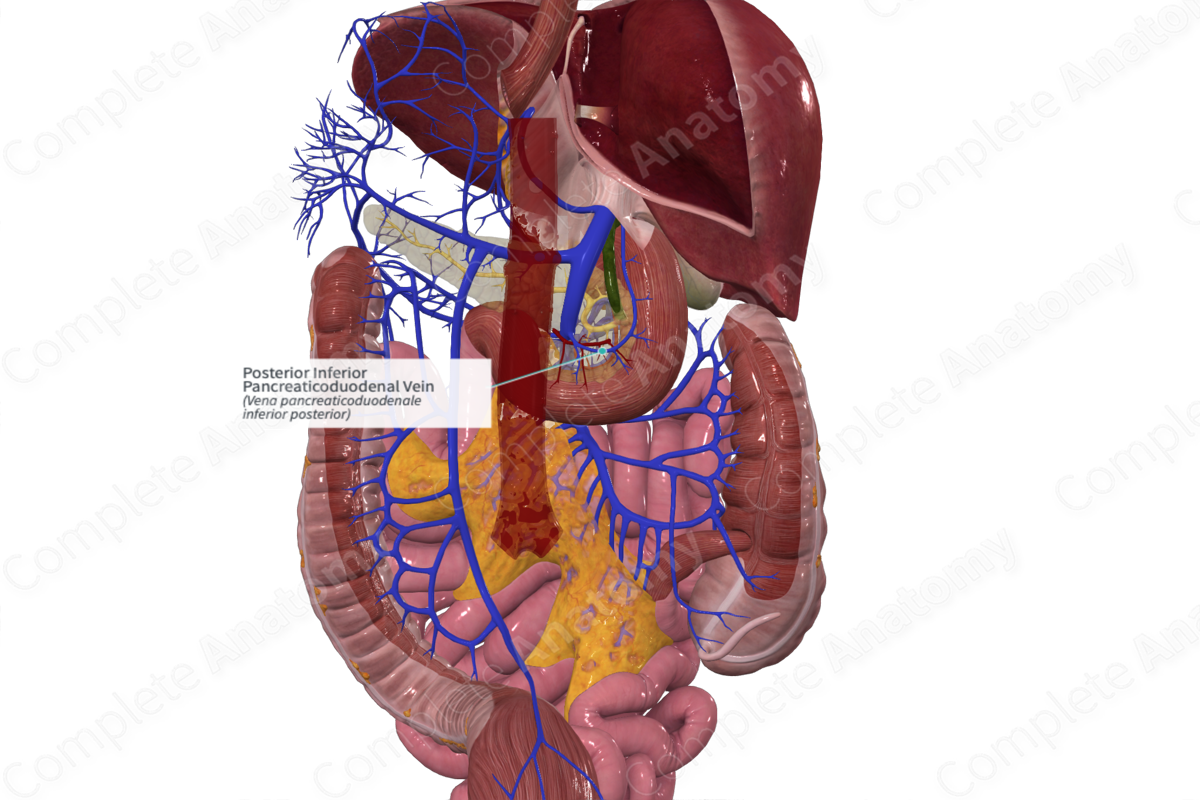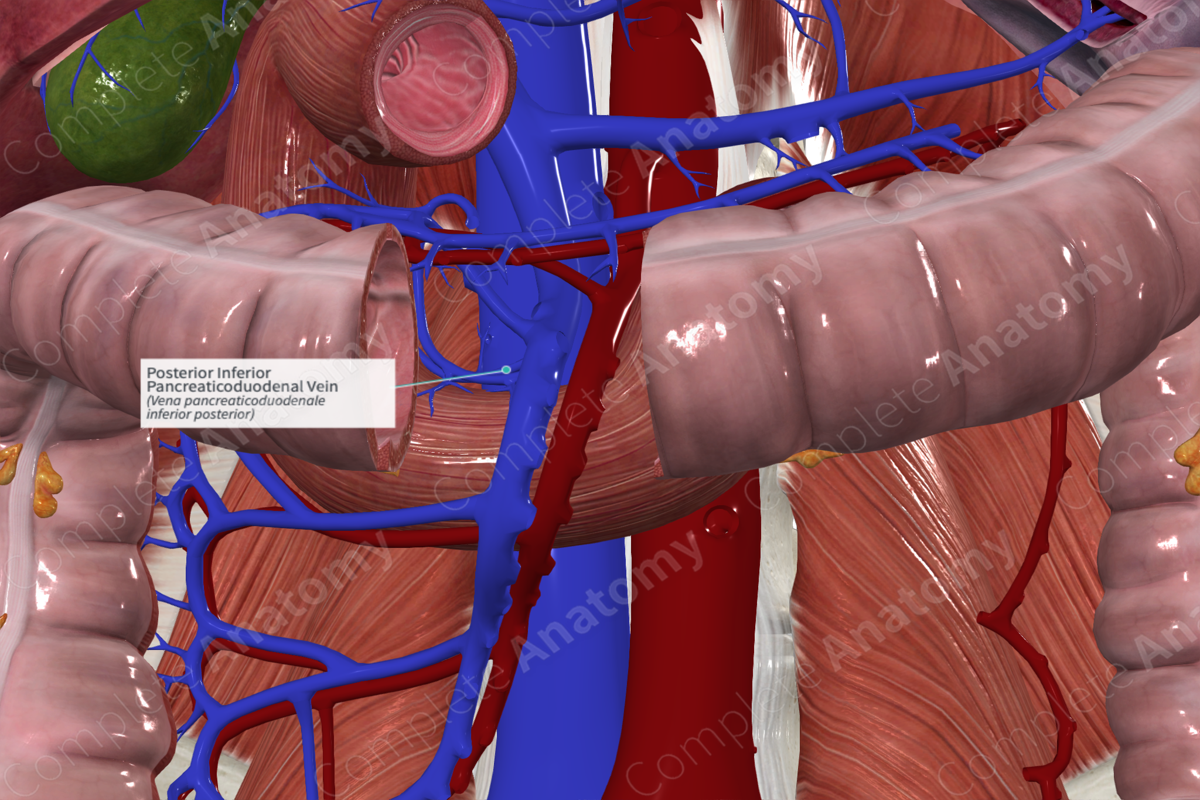
Posterior Inferior Pancreaticoduodenal Vein
Vena pancreaticoduodenale inferior posterior
Read moreQuick Facts
Origin: Dorsal inferior portion of the duodenum, head and uncinate process of the pancreas.
Course: Travels from right to left to drain into the superior mesenteric vein.
Tributaries: Venous arcades.
Drainage: Dorsal duodenum, head and uncinate process of the pancreas.
Origin
The posterior inferior pancreaticoduodenal vein arises from the inferior dorsal surface of the duodenum and the head and uncinate process of the pancreas.
Course
From its origin, the posterior inferior pancreaticoduodenal vein travels from right to left along the curvature of the duodenum and pancreatic head and uncinate process to drain directly into the superior mesenteric vein. Occasionally, the anterior and posterior inferior pancreaticoduodenal veins may merge to form a singular inferior pancreaticoduodenal vein before draining into the superior mesenteric vein (Standring, 2016).
Tributaries
The posterior inferior pancreaticoduodenal vein receives small venous arcades.
Structures Drained
The posterior inferior pancreaticoduodenal vein drains the dorsal surface of the second and third portion of the duodenum and the dorsal surface of the head and uncinate process of the pancreas.
List of Clinical Correlates
- Whipple procedure
References
Standring, S. (2016) Gray's Anatomy: The Anatomical Basis of Clinical Practice. Gray's Anatomy Series 41 edn.: Elsevier Limited.
Learn more about this topic from other Elsevier products




